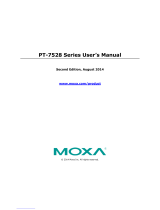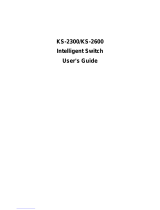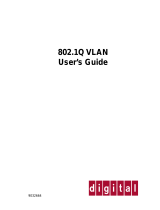
Table of Contents
1. Introduction...................................................................................................................................... 1-1
Overview...........................................................................................................................................1-2
Package Checklist...............................................................................................................................1-2
Software Features ..............................................................................................................................1-2
Recommended Optional Accessories......................................................................................................1-3
2. Getting Started ................................................................................................................................. 2-1
RS-232 Console Configuration (115200, None, 8, 1, VT100) ....................................................................2-2
Configuration by Telnet Console ...........................................................................................................2-5
Configuration by Web Browser .............................................................................................................2-6
Disabling Telnet and Browser Access.....................................................................................................2-8
3. Featured Functions ........................................................................................................................... 3-1
Configuring Basic Settings ...................................................................................................................3-2
System Identification...................................................................................................................3-2
Password ...................................................................................................................................3-3
Accessible IP...............................................................................................................................3-4
Port Settings...............................................................................................................................3-5
Network Settings.........................................................................................................................3-6
Neighbor Cache...........................................................................................................................3-9
System Time Settings..................................................................................................................3-9
Daylight Saving Time.................................................................................................................3-10
Configuring IEEE 1588/PTP.........................................................................................................3-10
System File Update—By Remote TFTP..........................................................................................3-13
System File Update—By Local Import/Export ................................................................................3-14
System File Update—By Backup Media.........................................................................................3-14
Restart.....................................................................................................................................3-15
Factory Default .........................................................................................................................3-15
Using Port Trunking ..........................................................................................................................3-15
The Port Trunking Concept .........................................................................................................3-15
Configuring Port Trunking...........................................................................................................3-16
Configuring SNMP.............................................................................................................................3-18
SNMP Read/Write Settings..........................................................................................................3-19
Trap Settings............................................................................................................................3-20
Private MIB information..............................................................................................................3-21
Using Communication Redundancy .....................................................................................................3-21
The Turbo Ring Concept.............................................................................................................3-21
Configuring Turbo Ring, Turbo Ring V2 ........................................................................................3-25
The Turbo Chain Concept ...........................................................................................................3-29
Configuring Turbo Chain.............................................................................................................3-31
The STP/RSTP Concept ..............................................................................................................3-32
Configuring STP/RSTP................................................................................................................3-37
Using Traffic Prioritization..................................................................................................................3-39
The Traffic Prioritization Concept.................................................................................................3-39
Configuring Traffic Prioritization ..................................................................................................3-41
Using Virtual LAN..............................................................................................................................3-43
The Virtual LAN (VLAN) Concept..................................................................................................3-43
Sample Applications of VLANs using TN-5500 ...............................................................................3-45
Configuring Virtual LAN..............................................................................................................3-46
Using Multicast Filtering.....................................................................................................................3-49
The Concept of Multicast Filtering................................................................................................3-49
Configuring IGMP Snooping ........................................................................................................3-51
Add Static Multicast MAC............................................................................................................3-53
Configuring GMRP .....................................................................................................................3-54
GMRP Table..............................................................................................................................3-54
Using Bandwidth Management............................................................................................................3-54
Configuring Bandwidth Management............................................................................................3-55
Broadcast Storm Protection ........................................................................................................3-55
Traffic Rate Limiting Settings......................................................................................................3-55
Using Port Access Control ..................................................................................................................3-56
Configuring Static Port Lock........................................................................................................3-58
Configuring IEEE 802.1X ............................................................................................................3-58
Using Auto Warning ..........................................................................................................................3-60
Configuring Email Warning .........................................................................................................3-61
Event Type...............................................................................................................................3-61
Email Setup..............................................................................................................................3-62
Configuring Relay Warning .........................................................................................................3-63
Event Setup..............................................................................................................................3-64
























